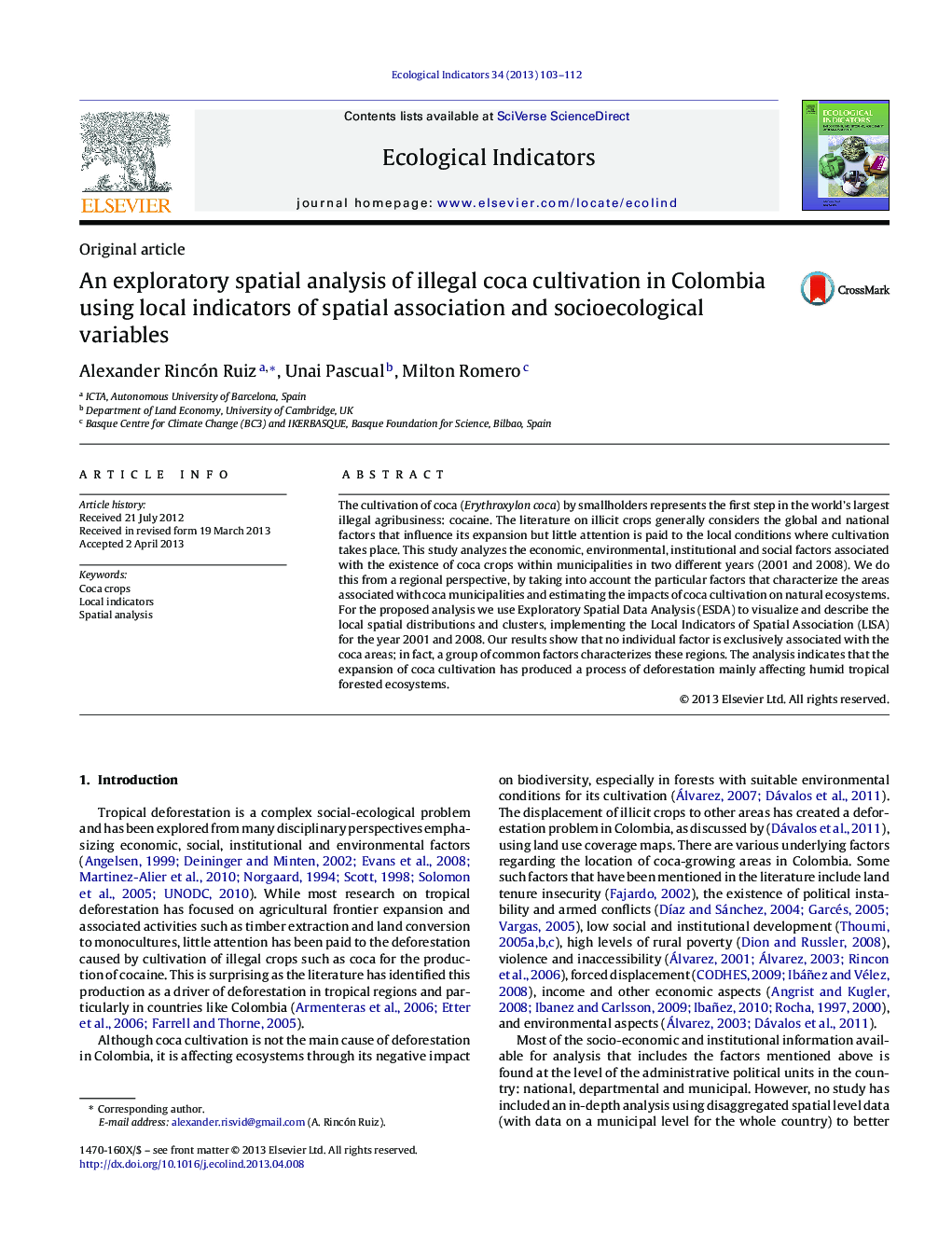| Article ID | Journal | Published Year | Pages | File Type |
|---|---|---|---|---|
| 6295239 | Ecological Indicators | 2013 | 10 Pages |
Abstract
The cultivation of coca (Erythroxylon coca) by smallholders represents the first step in the world's largest illegal agribusiness: cocaine. The literature on illicit crops generally considers the global and national factors that influence its expansion but little attention is paid to the local conditions where cultivation takes place. This study analyzes the economic, environmental, institutional and social factors associated with the existence of coca crops within municipalities in two different years (2001 and 2008). We do this from a regional perspective, by taking into account the particular factors that characterize the areas associated with coca municipalities and estimating the impacts of coca cultivation on natural ecosystems. For the proposed analysis we use Exploratory Spatial Data Analysis (ESDA) to visualize and describe the local spatial distributions and clusters, implementing the Local Indicators of Spatial Association (LISA) for the year 2001 and 2008. Our results show that no individual factor is exclusively associated with the coca areas; in fact, a group of common factors characterizes these regions. The analysis indicates that the expansion of coca cultivation has produced a process of deforestation mainly affecting humid tropical forested ecosystems.
Keywords
Related Topics
Life Sciences
Agricultural and Biological Sciences
Ecology, Evolution, Behavior and Systematics
Authors
Alexander Rincón Ruiz, Unai Pascual, Milton Romero,
